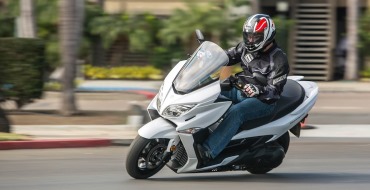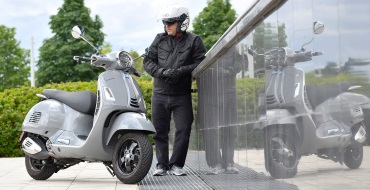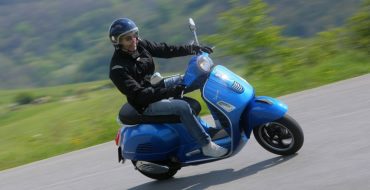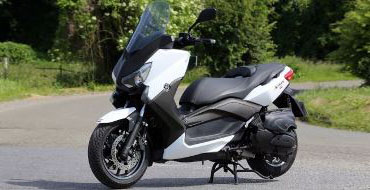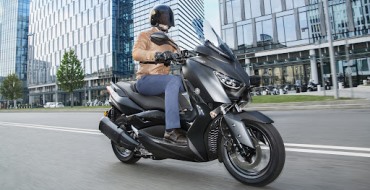 Yamaha XMAX YP125R - Service manual > Features
Yamaha XMAX YP125R - Service manual > Features
Outline of the fi system
The main function of a fuel supply system is to provide fuel to the combustion chamber at the optimum air-fuel ratio in accordance with the engine operating conditions and the atmospheric temperature. In the conventional carburetor system, the air-fuel ratio of the mixture that is supplied to the combustion chamber is created by the volume of the intake air and the fuel that is metered by the jet used in the respective carburetor.
Despite the same volume of intake air, the fuel volume requirement varies with the engine operating conditions, such as acceleration, deceleration, or operating under a heavy load. Carburetors that meter the fuel through the use of jets have been provided with various auxiliary devices, so that an optimum air-fuel ratio can be achieved to accommodate the constant changes in the operating conditions of the engine.
As the requirements for the engine to deliver more performance and cleaner exhaust gases increase, it becomes necessary to control the air-fuel ratio in a more precise and finely tuned manner. To accommodate this need, this model has adopted an electronically controlled fuel injection (FI) system, in place of the conventional carburetor system. This system can achieve an optimum air-fuel ratio required by the engine at all times by using a microprocessor that regulates the fuel injection volume according to the engine operating conditions detected by various sensors.
The adoption of the FI system has resulted in a highly precise fuel supply, improved engine response, better fuel economy, and reduced exhaust emissions.

- Lean angle sensor
- Air temperature sensor
- ECU (engine control unit)
- Engine trouble warning light
- Ignition coil
- Fuel injector
- Intake air pressure sensor
- Throttle position sensor
- ISC (idle speed control) unit
- Intake air temperature sensor
- Crankshaft position sensor
- O2 sensor
- Coolant temperature sensor
- Spark plug
- Fuel pump
- Speed sensor
Fi system
The fuel pump delivers fuel to the fuel injector via the fuel filter. The pressure regulator maintains the fuel pressure that is applied to the fuel injector at only 250 kPa (2.50 kgf/cm², 36.3 psi). Accordingly, when the energizing signal from the ECU energizes the fuel injector, the fuel passage opens, causing the fuel to be injected into the intake manifold only during the time the passage remains open. Therefore, the longer the length of time the fuel injector is energized (injection duration), the greater the volume of fuel that is supplied. Conversely, the shorter the length of time the fuel injector is energized (injection duration), the lesser the volume of fuel that is supplied.
The injection duration and the injection timing are controlled by the ECU. Signals that are input from the throttle position sensor, coolant temperature sensor, lean angle sensor, crankshaft position sensor, intake air pressure sensor, intake air temperature sensor, speed sensor and O2 sensor enable the ECU to determine the injection duration. The injection timing is determined through the signals from the crankshaft position sensor. As a result, the volume of fuel that is required by the engine can be supplied at all times in accordance with the driving conditions.

- Fuel pump
- Pressure regulator
- Fuel injector
- Ignition coil
- Coolant temperature sensor
- ECU (engine control unit)
- ISC (idle speed control) unit
- Throttle position sensor
- Lean angle sensor
- Speed sensor
- O2 sensor
- Catalytic converter
- Crankshaft position sensor
- Intake air pressure sensor
- Throttle body
- Intake air temperature sensor
- Air filter case
- Fuel system
- Air system
- Control system
See also:
 Yamaha XMAX YP125R - Service manual > General information
Yamaha XMAX YP125R - Service manual > General information
Identification Vehicle identification number The vehicle identification number "1" is stamped into the frame.




